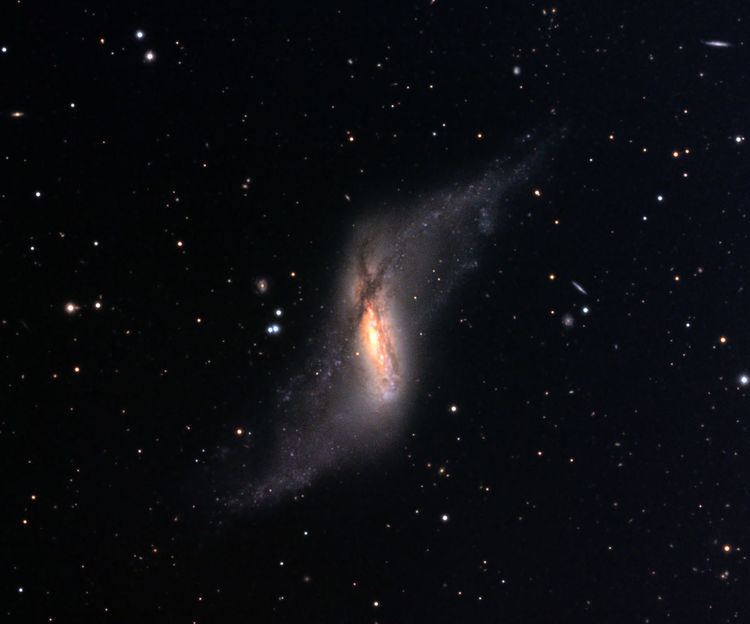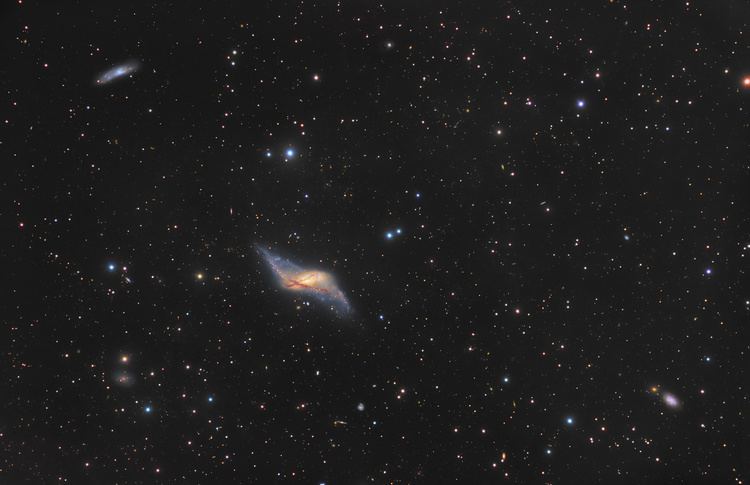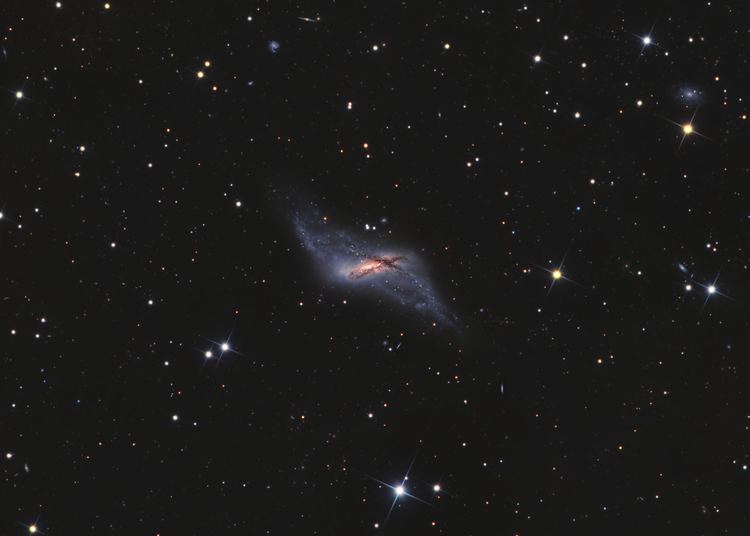Right ascension 01 43 02.4 Redshift 0.002842 Magnitude 12 Apparent magnitude (V) 12 | Declination +13° 38′ 42″ Apparent size (V) 2.710 × 0.840 arcmin | |
 | ||
Similar William Herschel discoveries, Other celestial objects | ||
2014 11 8 ngc 660 astronomy picture of the day
NGC 660 is a peculiar and unique polar-ring galaxy located approximately 45 million light years from Earth in the Pisces constellation. It is the only such galaxy having, as its host, a "late-type lenticular galaxy". It was probably formed when two galaxies collided a billion years ago. However, it may have first started as a disk galaxy that captured matter from a passing galaxy. This material could have, over time, become "strung out" to form a rotating ring.

The ring is not actually polar, but rather has an inclination from the plane of the host disk of approximately 45 degrees. The extreme number of pinkish star-forming areas that occurs along the galaxy's ring could be the result of the gravitation interaction caused by this collision. The ring is 50,000 light-years across - much broader than the disk itself - and has a greater amount of gas and star formation than the host ring. This likely indicates a very violent formation. The polar ring contains objects numbering in the hundreds. Many of these are red and blue supergiant stars. The most recently created stars in the ring were just formed approximately 7 million years ago. This indicates that the formation of these stars has been a long process and is still occurring.

Data about the dark matter halo of NGC 660 can be extracted by observing the gravitational effects of the dark matter on the disk and ring's rotation. From the core of the disk, radio waves are being emitted. The source of these waves is an area only 21 light years across. This may indicate the presence of a super-cluster of stars located within an area of cloud of gas. The region in the centre has a vast amount of star formation, so luminous that it is considered to be a starburst galaxy.

Late in 2012, this polar-ring galaxy produced an enormous outburst having a magnitude of approximately ten times brighter than a supernova explosion. The cause is not certain, but this event may have resulted from a tremendous jet being emenating from galaxy's central black hole.

